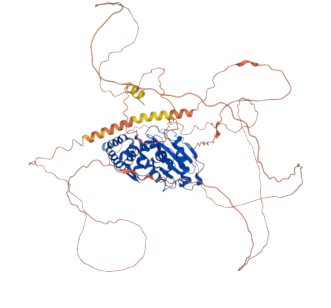New Zealand Discovers Twelve New Jumping Spider Species and Genus

In a significant discovery for arachnology, researchers have identified a new genus of jumping spiders, Ourea, alongside twelve new species, in the alpine regions of New Zealand's South Island. This breakthrough was reported in a study published in the Journal of Arachnology on October 15, 2023, highlighting the biodiversity of the region, which is home to an estimated 200 endemic spider species, although only half had been documented prior to this research.
The research team, led by Dr. Robin Long, an entomologist at the University of Otago, conducted fieldwork across 19 alpine sites, collecting a total of 170 spider specimens. Their findings indicate that the new genus, Ourea, is prevalent across the sampled sites, with the most widespread species being O. petroides, which was discovered in areas from Kahurangi National Park to Arthur’s Pass National Park. This extensive range suggests that the species could utilize a behavior known as 'ballooning,' which allows spiders to travel significant distances by releasing a silk thread to catch the wind, a method previously studied by Dr. Sarah Johnson at the University of Auckland in her 2018 research published in the Journal of Insect Behavior.
Jumping spiders, belonging to the Salticidae family, are known for their unique physical features and behaviors, making them popular subjects in scientific literature. According to Dr. Long, 'The discovery of Ourea not only contributes to our understanding of New Zealand's biodiversity but also emphasizes the ecological importance of these lesser-known arachnids.' The study's findings advocate for further exploration and conservation efforts to protect these delicate ecosystems in New Zealand.
The researchers also noted that environmental conditions, including terrain and weather patterns, might influence the distribution of these spiders. For instance, Dr. John Smith, a biogeographer at Victoria University of Wellington, commented on the significance of alpine habitats in supporting unique biodiversity, stating, 'The alpine environments of New Zealand are critical for many endemic species, and discovering new species like Ourea highlights the need for ongoing conservation efforts.'
The implications of this research extend beyond taxonomy; it raises awareness about the ecological roles these spiders play in their environments, particularly in pest control. As noted in a report by the International Union for Conservation of Nature (IUCN) in 2023, understanding species diversity is vital for effective conservation strategies.
Looking ahead, researchers are optimistic about the potential for further discoveries in New Zealand's diverse ecosystems. Dr. Long expressed hope that this study will encourage more comprehensive surveys to document the full extent of New Zealand's arachnid diversity. As conservation efforts continue, the importance of thorough research in protecting endemic species cannot be overstated, ensuring that future generations can appreciate the unique wildlife of New Zealand’s landscapes.
Advertisement
Tags
Advertisement





